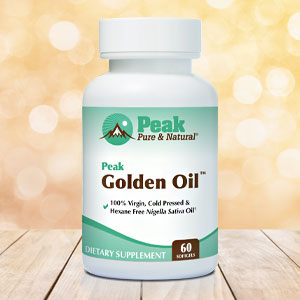Get Easy Health Digest™ in your inbox and don’t miss a thing when you subscribe today. Plus, get the free bonus report, Mother Nature’s Tips, Tricks and Remedies for Cholesterol, Blood Pressure & Blood Sugar as my way of saying welcome to the community!
4 real health benefits of a good cry

When was the last time you had a good cry?
For me, it was just the other day. The reason didn’t make a lot of sense, from a logical standpoint, but when it was over, boy, did I feel good!
Human beings are the only creatures who can cry out of emotion. Hippocrates, the father of modern medicine, described tears as “humors from the brain.”
We produce tears at other times, too, and those tears have very specific functions. But the tears that come from a good cry are different.
Sobbing your heart out does more than release emotion. There’s science behind those tears, and why we cry, and what it does for your emotional well-being as well as your physical health.
What are tears made of?
There are three kinds of tears:
Basal. These are your basic, everyday tears that are there all the time, happy or sad. They contain oil, water, mucus, and salt. They help fight infection. The oil in tears keeps them from evaporating, and blinking spreads them evenly over the eye’s surface.
Eyewash. These are the tears that flush out irritants. When you chop onions or get dust in your eye, these tears come gushing out of glands that sit under your eyebrows.
Psychic. These, of course, are emotional tears. Their composition is not the same as that of other tears.
While the tears that spring from your eyes when you chop an onion are mostly water, your tears of sorrow are full of hormones and painkillers:
- Adrenocorticotropin hormone (ACTH) – a hormone related to stress. Releasing this hormone is perhaps why we feel better after a bout of emotional crying.
- Leucine-enkephalin – an endorphin that reduces pain and helps improve mood. One study with mice found that increasing enkephalins in their brain made them behave with less fear and anxiety.
The “sexism” of tears
We all know the stereotype that labels women as being weepy, while the male stereotype portrays the strong, silent types that don’t cry.
The relationship among anatomy, hormones, and social norms that causes this tendency is kind of complicated.
Men do have smaller tear ducts than women. And men who are treated with prostate cancer drugs tend to have reduced testosterone levels and many are more likely to cry, making experts believe that testosterone inhibits crying.
On the other hand, emotional tears in both sexes have a large amount of prolactin. This is the hormone that produces breast milk in women of childbearing age. So, there’s definitely purpose behind shedding tears, including…
How tears make our bodies healthier
Considering the health benefits of shedding tears, it’s a shame that men and boys are discouraged from crying.
Here are 4 ways anyone could benefit from a good cry…
Pain relief. Studies have shown that emotional crying releases the neurotransmitter oxytocin, a “feel good” hormone that is released during sexual intercourse, and generally lowers anxiety. Oxytocin is also a pain reliever.
Clears out the ducts. Tears are made in your tear glands and drain through your tear ducts. Those ducts connect to the inside of your nose. That’s why we get kind of snotty when we cry. It’s the body’s way of cleaning out those ducts.
Flushes out toxins. Scientists think that crying may get rid of toxins in the body. Emotional tears are full of stress hormones and other chemicals. Studies are ongoing, but it is thought that crying gets rid of some poisons your body has been storing.
Nerve growth factor (NGF). Nerve growth factor is a protein that supports nerve and brain function. Since tear glands contain NGF, one theory is that our tears release the protein, bypass the brain-blood barrier via the trigeminal nerve, and send NGF right back into the brain where it is needed.
One caveat: if you’re made to feel ashamed for crying, many or all of these benefits go out the window.
So, have that good cry, and don’t apologize for it!
Editor’s note: Have you heard of EDTA chelation therapy? It was developed originally to remove lead and other contaminants, including heavy metals, from the body. Its uses now run the gamut from varicose veins to circulation. Click here to discover Chelation: Natural Miracle for Protecting Your Heart and Enhancing Your Health!
Sources:
- What Tears Are Made of And Why You Cry (Infographic) — Cleveland Clinic
- Nobel Scientist’s Claim Examined: Do Women Actually Cry More? — Live Science
- The Biochemical Purpose Of Crying — On Psychology and Neuroscience
- The Chemistry of Crying — The Washington Post
- Is crying a self-soothing behavior? — Frontiers in Psychology













